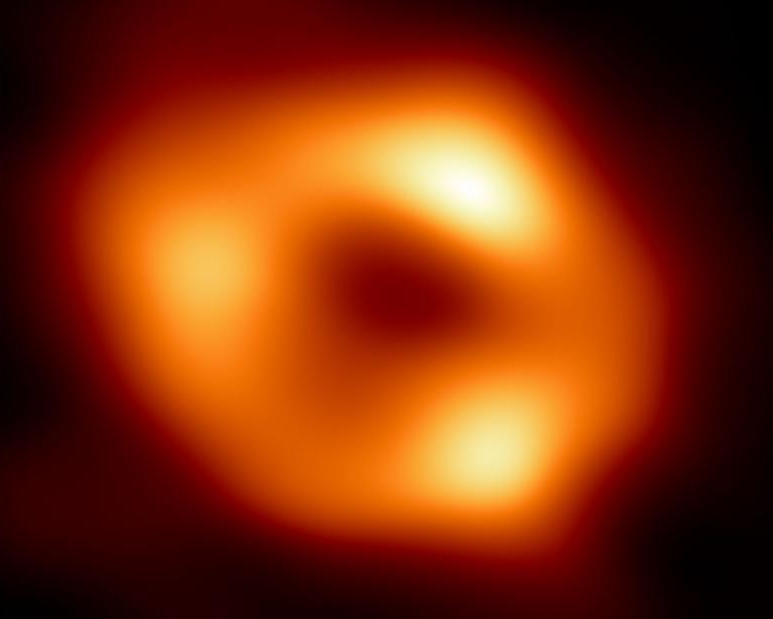Picture of the Black Hole at the Center of the Milky Way Captured for the First Time
May 17, 2022
On May 12, 2022, astronomers from the Event Horizon Telescope Collaboration captured the first ever recorded image of the super massive black hole at the center of the Milky Way, called Sagittarius A, with their Event Horizon Telescope. This picture was an amazing discovery that helps everyday people, who are not astronomers, to see what the black hole that is at the center of our galaxy looks like and also to help pique interest in astronomical topics such as black holes and the astrophysics behind them.
As well as the everyday person’s outlook on it, scientists, especially the ones working at the Event Horizon Telescope Collaboration, will be able to advance in their work and studies. The Event Horizon Telescope Collaboration, which was behind capturing the image of the black hole, is an international collaboration of astronomers and scientists who study Very Long Baseline Interferometry, or VLBI, telescopes to help measure emissions at very long ranges. Their main focus in terms of their observations was to improve the VBLI capabilities of measuring short wavelengths to help measure and better understand black holes by imaging them, their emissions, and measuring their dynamic growth.
With new facilities at higher altitudes that specialize at smaller wavelengths, more accurate imaging and measuring of the dynamic growth of black holes can be recorded. The main goal of all of these measurements is to better understand black hole physics, general relativity in relation to strong field regimes (large fields of gravity), and how event horizons work.
Nearly all galaxies have these supermassive black holes at the centers of them. Supermassive black holes are like normal ones where they are a point so dense in terms of mass that they create a gravity well in space that is so strong that, past the event horizon, not even light can escape the pull of the black hole. The only difference is that these super massive black holes are at the centers of nearly all the galaxies in the universe, they are able to consume more matter, and they are also much larger than normal black holes.
An interesting thing that the scientists found in the image is that Sagittarius A was a lot calmer than they had expected. The black void in the middle of the image was a lot more clearly defined because it was not rampantly consuming matter to the degree that would cause an unclear shot of the center. This also tells scientists a lot of information about the characteristics of Sagittarius A. Scientists have also found Sagittarius A to be the size of Mercury’s orbit around the sun, or 4 million times more massive than the sun, which is not actually as large as they can get. Some supermassive black holes can grow to be 100 billion solar masses. Einstein had an equation to theoretically measure the size of a black hole in his general relativity study. Using his equation, Sagittarius A was predicted to be about Mercury’s orbit around the sun in size, therefore proving another part of his general relativity theory.
As the technologies surrounding astronomers and scientists develop, more and more discoveries like this one will be made, allowing humans to take a deeper look into the universe and into the understanding of space and its workings.




















